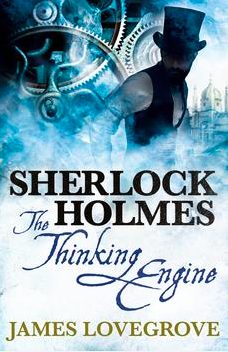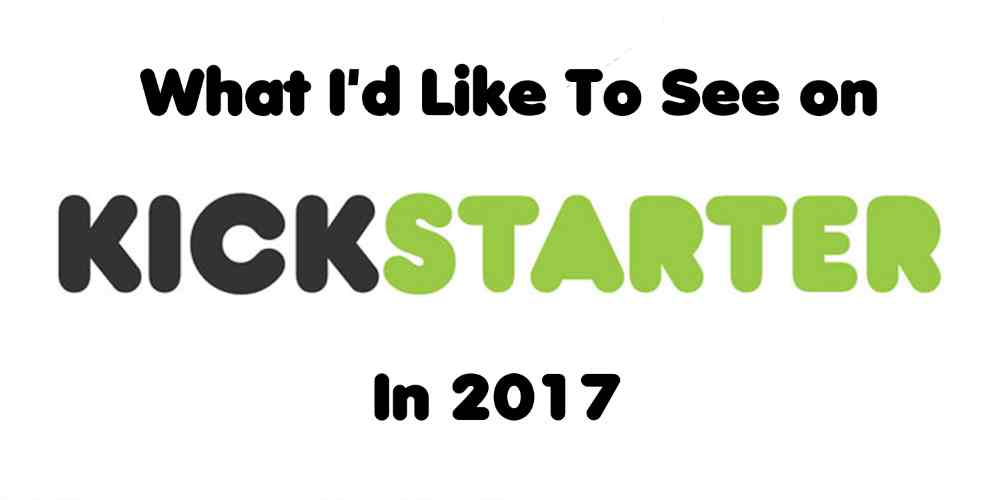Time to get to work! Create the best pipeline to manufacture goods, and you’re headed for success. Train up your workers, gather resources, and build some Fantastic Factories.
In Reaping the Rewards, I take a look at the finished product from a crowdfunding campaign. Fantastic Factories was originally funded on Kickstarter in June 2018, and was delivered to backers in fall of 2019. It is available for purchase, and the team is actually back on Kickstarter for the Manufactions expansion. (The campaign is nearly over, so if you’re interested, check it out soon!) This review is adapted from my Kickstarter Tabletop Alert, updated to reflect final components and rules.
What Is Fantastic Factories?
Fantastic Factories is a dice-placement game for 1 to 5 players, ages 14 and up, and takes 45 to 60 minutes to play. It retails for $39.95, and is available in stores and from Deep Water Games. I’ve played with both adults and kids (as young as 11) and I think it’s easy enough to learn that younger kids—especially those with a little gaming experience—shouldn’t have any trouble picking it up.
Fantastic Factories was designed by Joseph Z. Chen and Justin Faulkner, and published by Metafactory Games and Deep Water Games, with art by Joseph Z. Chen and Allan Tien.
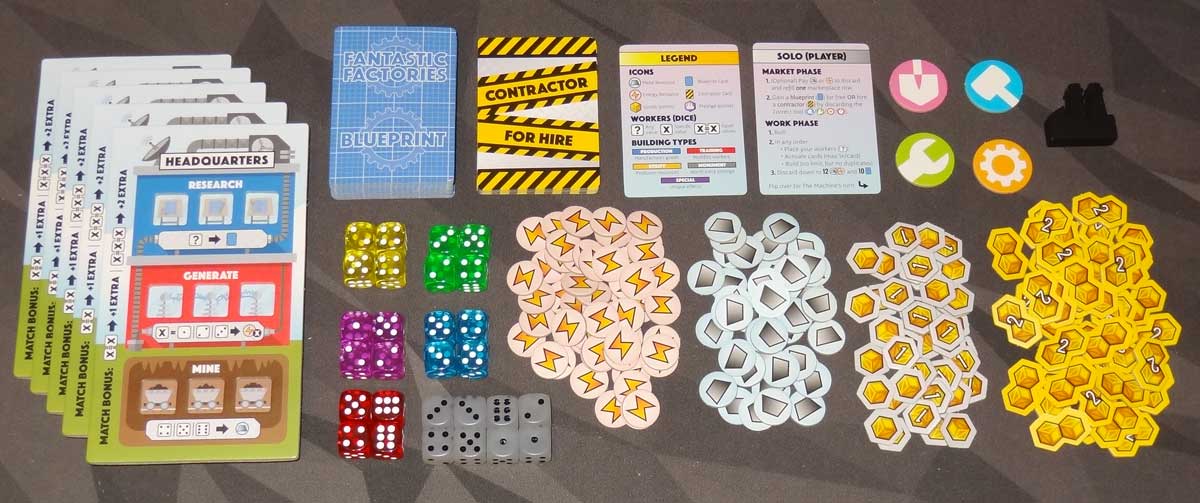
Fantastic Factories Components
Note: My review is based on a prototype copy, so it is subject to change and may not reflect final component quality. Most of the artwork is complete, but there were some cards that weren’t complete. Also, the dice spaces on the illustrations will be a little more visible in the final version (as you can see in the images on the Kickstarter page).
- 28 dice (4 red, 4 blue, 4 green, 4 yellow, 4 purple, and 8 white)
- 50 Energy tokens
- 30 Metal tokens
- 85 Goods tokens
- 4 Tool tokens
- First Player token
- 78 Blueprint cards
- 18 Contractor cards
- 5 player boards
- 5 Player Aid cards

The blueprint cards have great, colorful illustrations, and for the most part are fairly easy to understand. Each card has building costs in the top left, prestige values in the top right, and an effect at the bottom. Some cards have spaces to place dice on them; the types of dice required are marked both in the spaces and in the effect area below. The cards are color coded by building type, and the type is also printed in a small banner below the illustration. There are a few of the illustrations—like the Motherlode shown below—that really make me smile: let’s mine for metal by attaching a drill to an upside-down space shuttle! I sort of wish there were more of the goofy illustrations, but I still like the more conventional buildings, too.
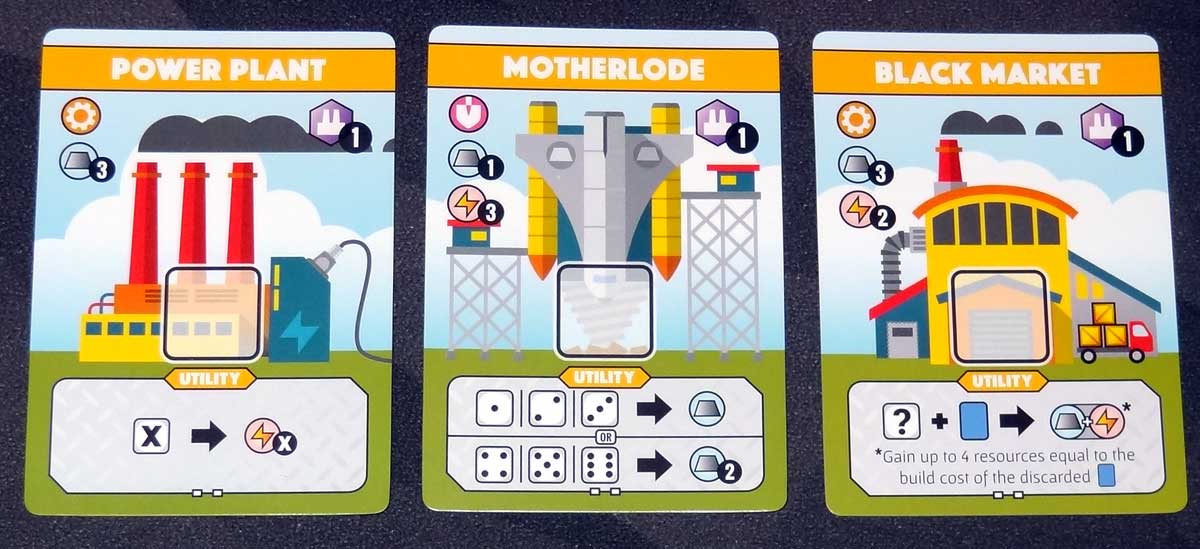
The finished game looks a lot like the prototype: clear iconography, good illustrations, and fairly simple resource and goods tokens. The contractor cards are also simply illustrated—the people look almost a bit like LEGO minifigs—and I like that there are masculine and feminine versions of each occupation for variety.
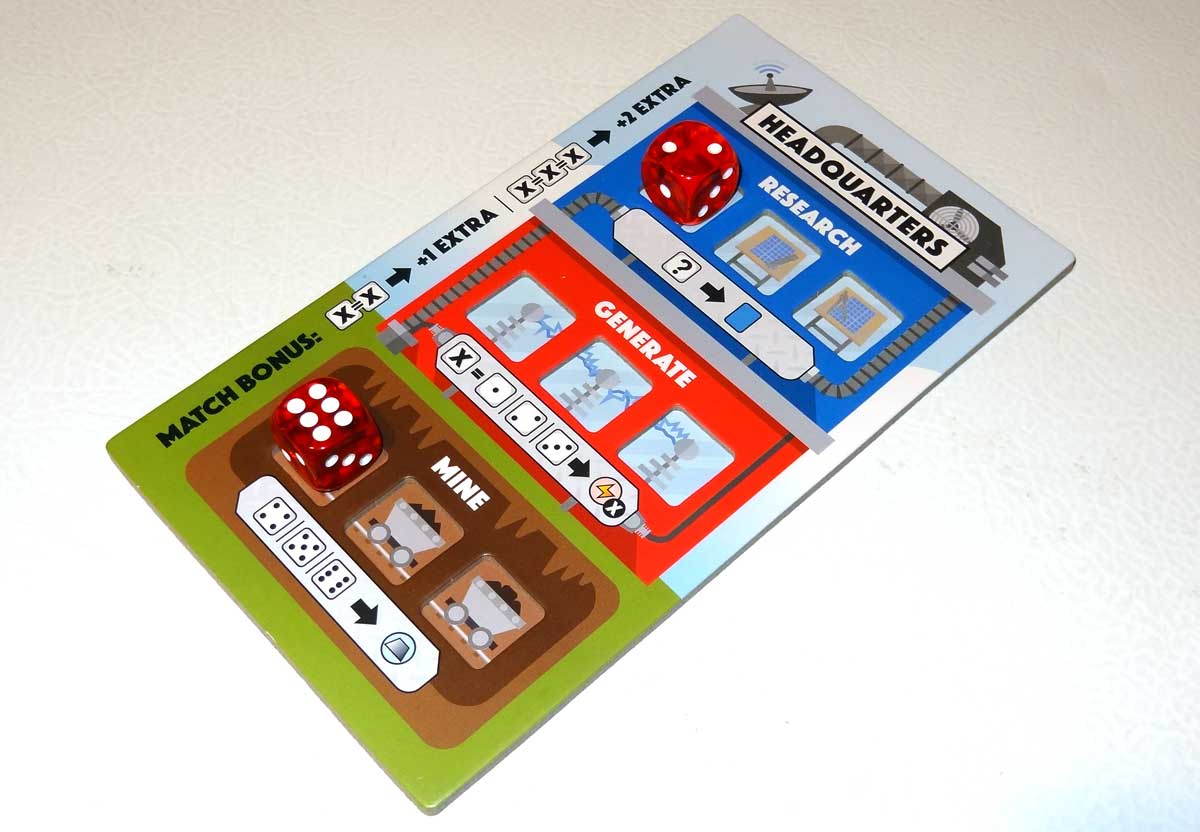
The player boards have been upgraded from the prototype: they’re now dual-layered boards, with recessed spaces to hold dice, and there’s also an illustration of your headquarters on it. It shows what dice can be used to generate blueprints, energy, and metal, as well as the match bonus. The only thing I don’t quite like is that the reference text about the match bonus is printed vertically along the side, and the placement of the “|” makes it look at first like the bonuses apply to the Research and Generate sections of your board, as opposed to being overall bonuses.
How to Play Fantastic Factories
You can download the rulebook here.
The Goal
The goal of the game is to score the most points by building valuable buildings and manufacturing goods.
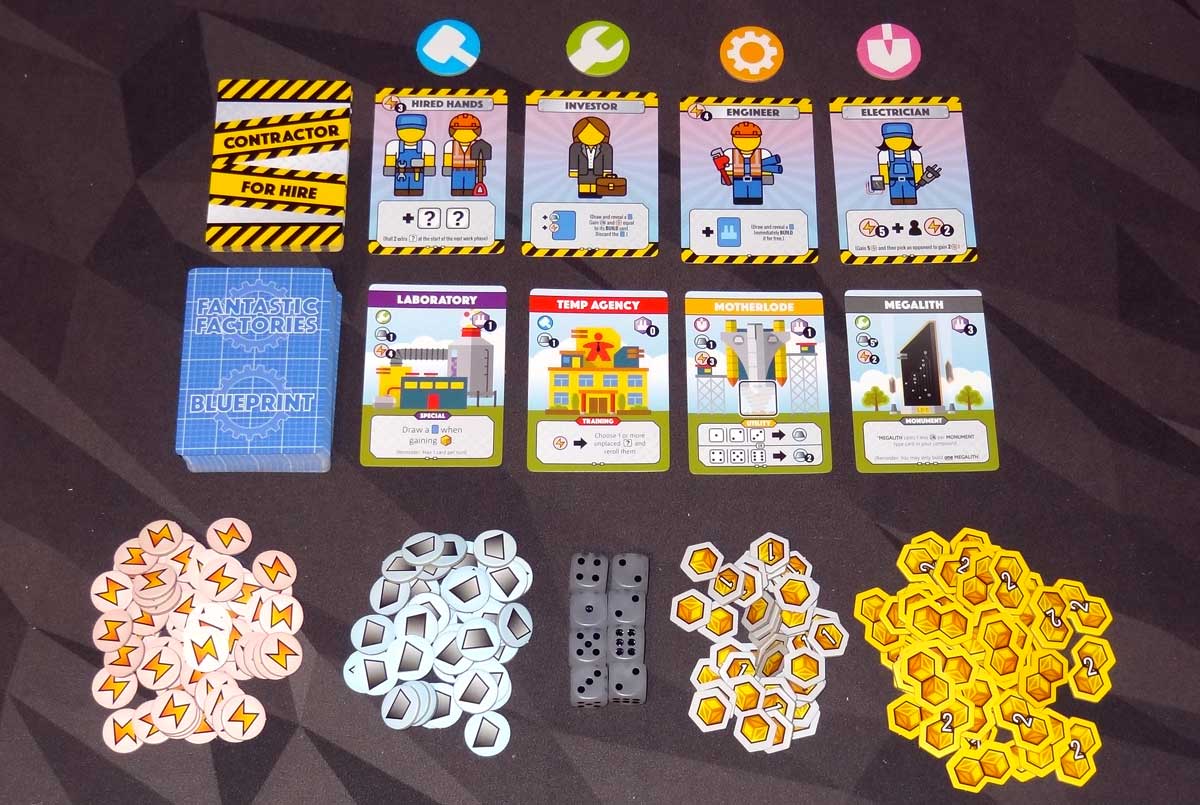
Setup
Place the tool tokens in a row and deal one contractor card face-up below each one, and then deal 4 blueprint cards face-up in the market area. Place the two decks nearby, as well as the resource and goods tokens and the white dice.
Deal 4 blueprint cards to each player. Give each player a player board, a set of 4 colored dice, 2 energy, and 1 metal. Choose a player to be first player and give them the first player token.
Gameplay
Each round has a market phase and a work phase.
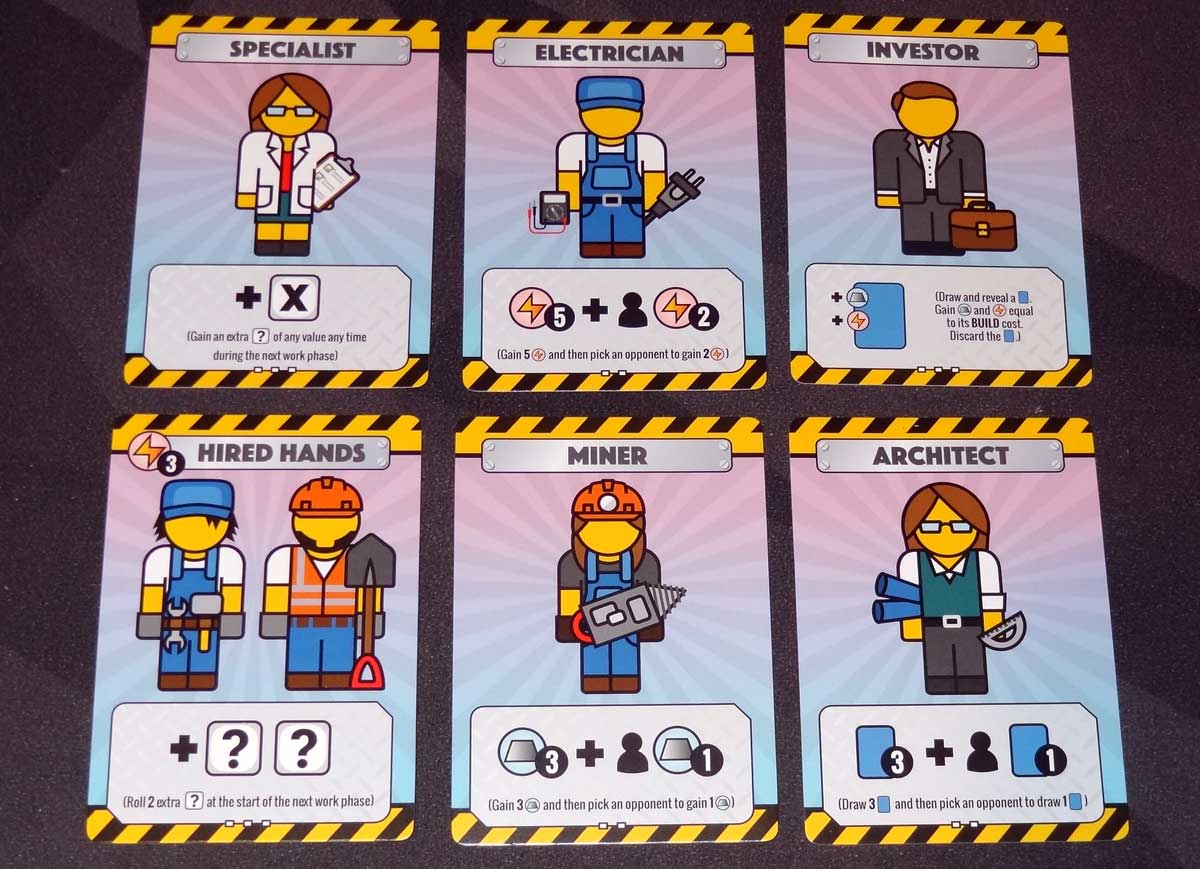
During the market phase, each player in turn order may either take a blueprint card from the market (for free) or pay to hire a contractor. To hire a contractor, you must discard a blueprint card from your hand that matches the tool token next to the card. Some contractors have additional costs that must be paid (printed at the top left of the card). You may, before taking a card, spend 1 resource (metal or energy) to clear one of the rows and replace the cards.
After taking a card, replace it from the top of the deck.
The work phase is simultaneous—everyone can do their actions at the same time. First, everyone rolls their dice, and then may use their dice and resources to take actions.
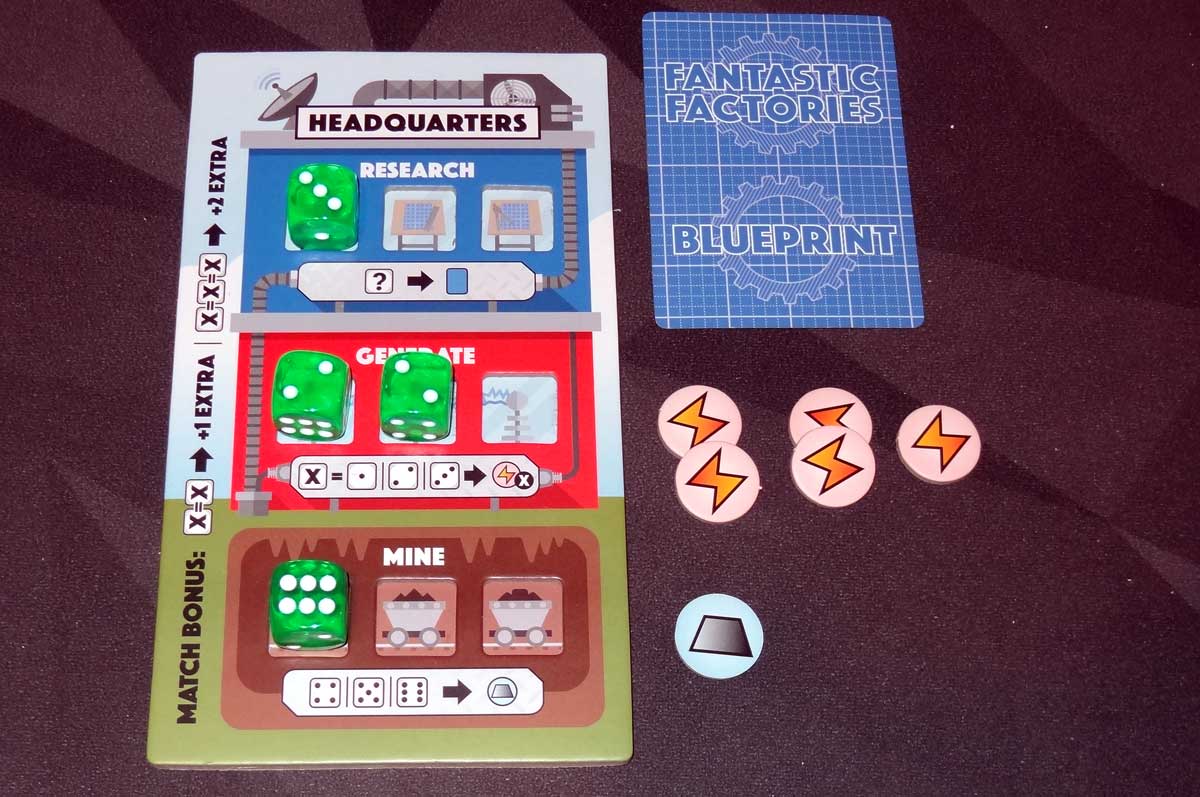
Your player board has 9 slots for dice, which will allow you to research, mine, or generate:
- Research (any value die): draw 1 blueprint card for each die placed
- Generate (values 1, 2, 3): gain energy equal to the value of the die placed
- Mine (values 4, 5, 6): gain 1 metal for each die placed
In addition, there are match bonuses: if you place a pair of the same number in the same action, you get 1 extra reward; if you place three of the same number, you get 2 extra. In the photo above, the die placed in “research” allows me to draw 1 card. The single die in “mine” gives me 1 metal. The dice in “generate” give me 2 energy each because that’s the value of the dice; in addition, because I placed a pair, I gain 1 extra energy as a matching bonus.

To build a blueprint from your hand, you will need to spend the resources shown in the top left corner and discard a second blueprint card that has a matching tool icon. For instance, to build the University shown above, you would need to discard another blueprint with the green wrench icon and spend 1 metal.
Each building may only be used once per work phase, and typically you may only build one of each blueprint unless otherwise specified. There are many different types of buildings:
- Training buildings let you manipulate your dice.
- Utility buildings produce resources.
- Monument buildings are just worth points.
- Production buildings produce goods (and sometimes other bonuses).
- Special buildings have various effects, from gaining extra dice to giving you building bonuses.

During the work phase, you may take your actions in any order. You can build blueprints, activate building effects, and use your player board to gain cards and resources.
Most buildings have some sort of cost to use, whether in resources, cards, or dice. For dice, the card will generally show what numbers are required—you might need a pair of matching dice, or a single die of a particular value, or three dice that hit a particular total.

The work phase ends when everyone is done with their actions. Everyone must discard down to 12 total resources and 10 blueprint cards.
Pass the first player token clockwise, and start a new round!
Game End
The game end is triggered when somebody has produced 12 points of goods or built 10 buildings. Finish the current round, and then play one more full round, and then the game ends.
Total up your points from goods and buildings (the purple hex at the top right of the cards)—the highest score wins. Tie-breakers are leftover metal, then energy, then blueprint cards in hand.
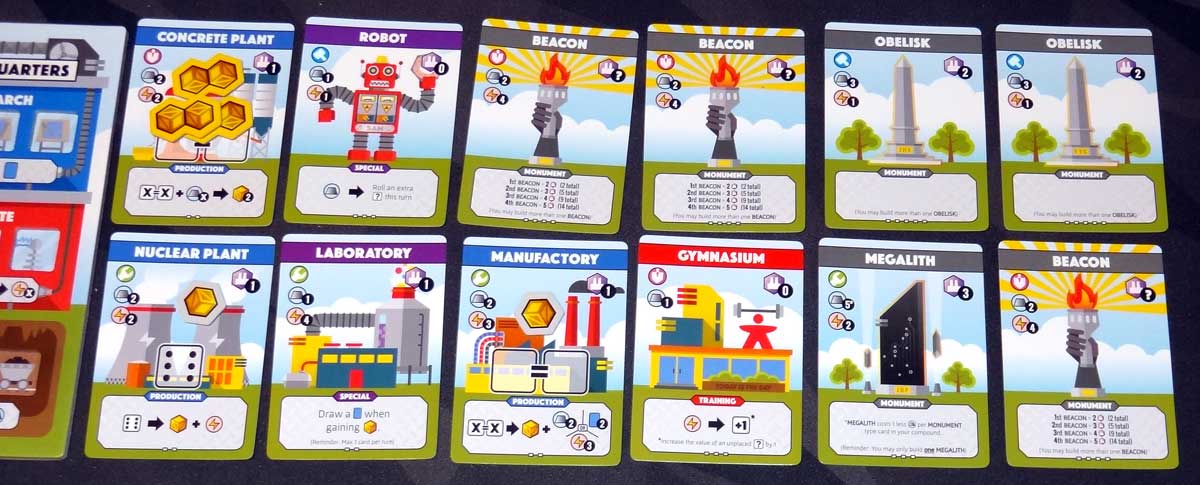
Solo Rules
There are solo rules included as well. You play against the Machine, which starts with a set of blueprint cards (the more starting cards, the harder the game). You’ll play your turn as normal, using white dice, and the Machine will use a set of five different colored dice, which will indicate which card it takes from the market and whether or not it produces goods. Your goal is to score more points than the Machine, which has slightly different scoring rules than usual.
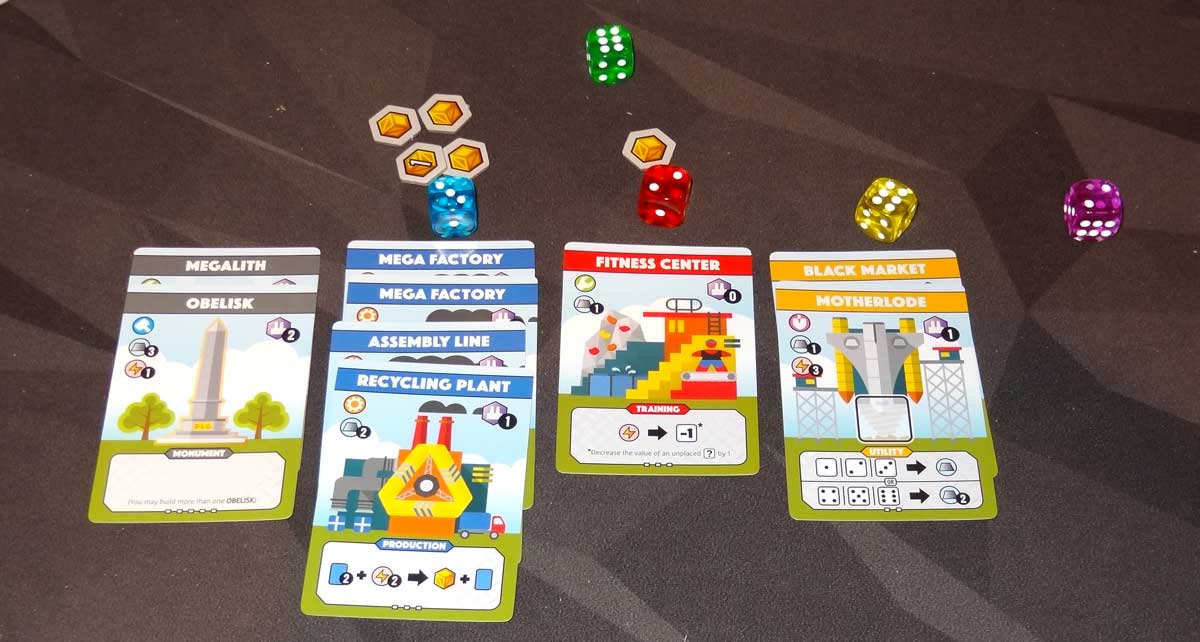
Each round, the green die will indicate which blueprint it will take: 1–4 takes from the market row; 5 and 6 take from the top of the deck and then refresh the blueprint row or the contractor row, respectively.
Then, you look at the other four dice and compare their values to the number of buildings of the matching colors. If the die is equal to or lower than the number of buildings, then it produces 1 good. In the photo above, the blue die will produce 1 good because it’s value 3 and there are 4 blue buildings. The red, yellow, and purple die will not produce any goods. So the more buildings of a specific color the Machine owns, the more likely it is that it will produce goods.
The game end is triggered as usual, though the Machine can only trigger the end game by producing 12 goods rather than owning 10 buildings.
The Machine scores 1 point per building, 1 bonus point per monument, and 1 point per good. You win if you beat the Machine’s score.
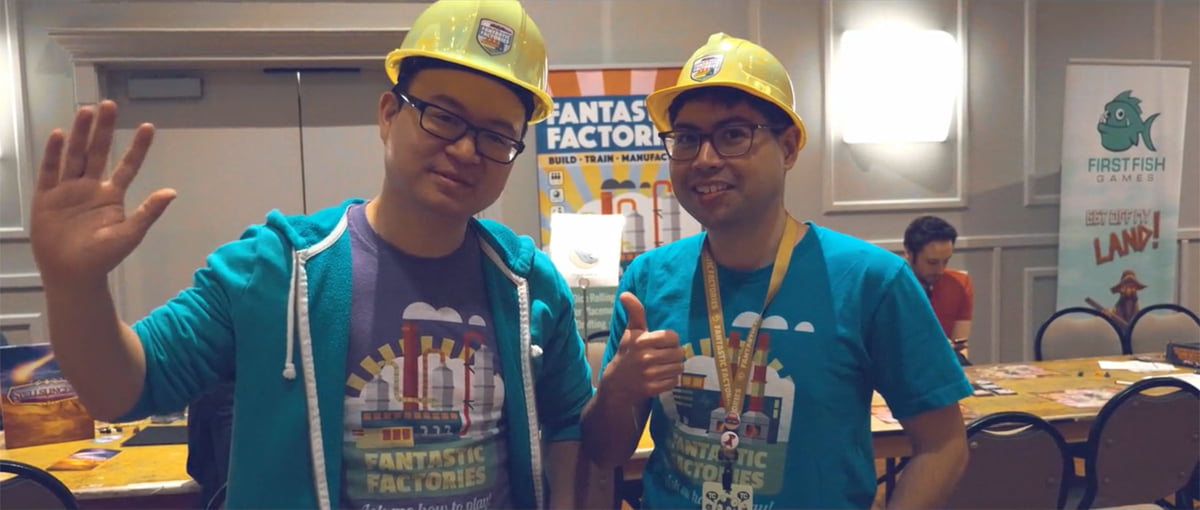
Why You Should Play Fantastic Factories
If you’ve attended a game convention in the past couple years, you might have seen these two guys wearing hard hats. Joseph Chen and Justin Faulkner, the designers of Fantastic Factories, have been working on the game for a few years now, running demos and playtests, getting feedback, and refining it. All that work really shows: Fantastic Factories hits that tricky balance of being easy enough not to overwhelm your casual gamers, but with enough depth to keep your strategy gamers engaged.
I like that the rules themselves are pretty simple. The market phase is usually very quick, because each player will only take one card, and then you get to the meat of the game. Because the work phase is simultaneous, it means that a lot of the strategizing and planning happens all at once, which keeps the game at an hour or less without sacrificing meaningful choices during play.
And there are a lot of decisions to make. If you’ve got bad luck with dice, maybe you build several different training facilities so that you can re-roll, flip, increase, or decrease dice. If you like engine-building, maybe you’ll hit on a great combination of utility and production cards that you can use as a pipeline to make goods. Or, maybe you just pour all of your workers into harvesting resources so you can build high-value prestige cards.
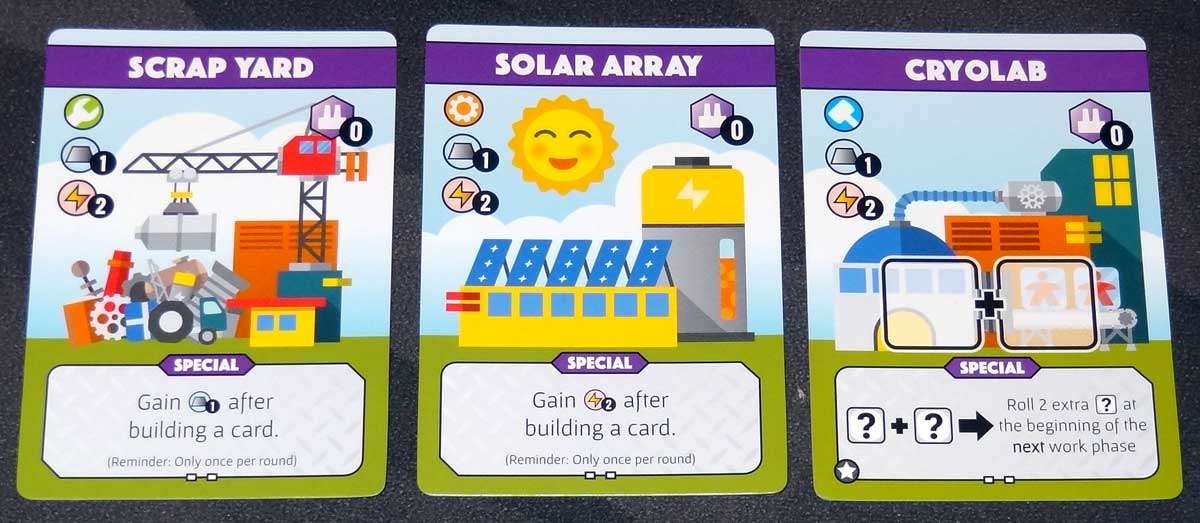
Because the game end is triggered when somebody reaches 10 buildings, you do have to balance how many 0-point buildings you create. There are a lot of really helpful powers that can get you more resources or cards or even dice, but many of those buildings aren’t worth points in themselves. It’s not enough just to amass resources—you need to spend them wisely, too.
Likewise, it doesn’t help to build a bunch of production facilities if you can’t generate the resources (or roll the dice) to run them. Since many of the production facilities require sets of dice to activate, you’re limited by the number of dice you have (4, unless you have bonuses), which means that you might not be able to use all of them in the same turn. But having a variety does give you flexibility if you can’t manipulate the dice rolls.
And I can’t stress enough the importance of getting blueprint cards. Every building you build requires you to discard a matching blueprint card, as does every contractor you hire. You’ll often find yourself wishing you could build every card in your hand and wanting to hire a contractor, but you simply can’t. In addition to managing your resources, you have to manage your cards. Sometimes you may take a blueprint during the market phase just so you can get a particular tool symbol into your hand, regardless of the building itself.

One criticism that may come up, depending on your gaming group’s preference, is that it doesn’t have a lot of direct player interaction. The market phase is drafting from a common pool, so there can be some competition over specific cards, but once the work phase begins, nothing you do really affects anyone else. The game is a race, not a battle. For players who love engine-building games and getting their pipeline up and running, Fantastic Factories is a great fit.
If you want to be able to throw a wrench into somebody else’s gears? Well, that’s where Manufactions comes in. It’s currently on Kickstarter (with just a day or two left), but there are two new expansions in store: Manufactions and Subterfuge. Both include a little more player interaction, especially the Subterfuge set, which brings in contractors that can sabotage somebody else’s building to shut it down for a round, and buildings that can allow for things to exchange between players. Manufactions adds variable player powers: each player has a different company, which affects their starting resources and gives them a special ability.
I played the Fantastic Factories prototype several times with a variety of players—there were really close games, with somebody winning by a single point, and there were games with a wide point spread at the end, but I had fun each time. Alas, my finished copy arrived last year in the middle of holiday reviews and then quarantine hit, so I haven’t gotten to play the finished copy with my regular gaming group yet. I like the way that my kids were able to play against adults (and hold their own: my 11-year-old won a game against three other adults, and once I came in third in a game playing against four other kids). I’m looking forward to when I can have people around the table with me, rolling dice and setting up buildings. In the meantime, I did get to try the new expansions on Tabletop Simulator (even though I came in dead last).
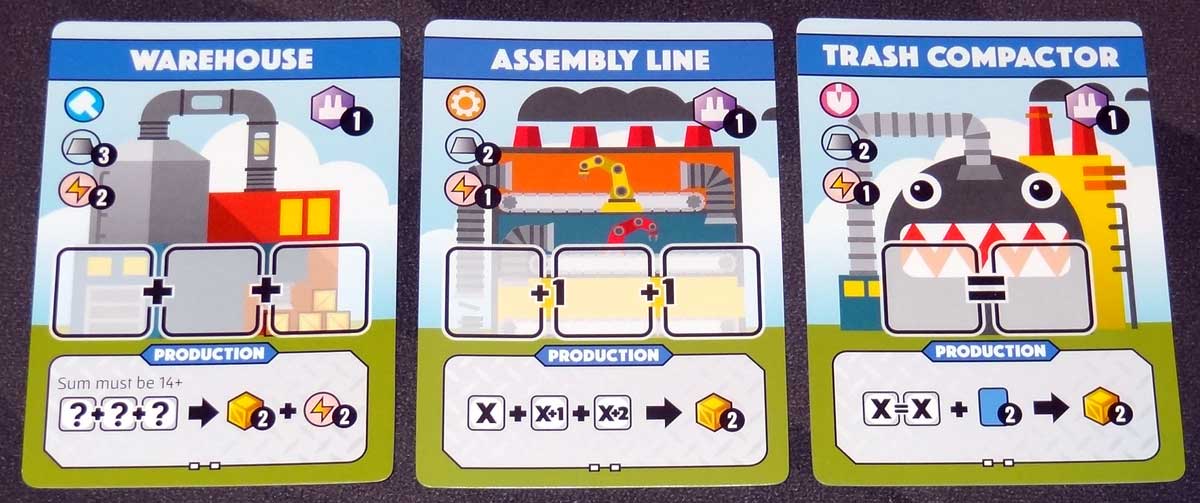
Although the gameplay is pretty simple, the strategy isn’t. You’ll get better as you learn what types of cards are available in the decks, because then you can try to plan out supply chains. If you like games that involve logistics, Fantastic Factories is right up your alley. I’ve enjoyed trying out different approaches: going for prestige cards, looking for building bonuses, trying to produce goods right from the start. It’s fun to see all the different ways people approach the game.
For more information, visit the Fantastic Factories website or pick up a copy from Deep Water Games. And if you like the idea of sabotaging your rivals, be sure to take a look at the Manufactions Kickstarter before it ends on Tuesday!
Click here to see all our tabletop game reviews.
If you’d like to stay up-to-date with all of our tabletop gaming coverage, please copy this link and add it to your RSS reader.
Disclosure: GeekDad received a copy of this game for review purposes.



